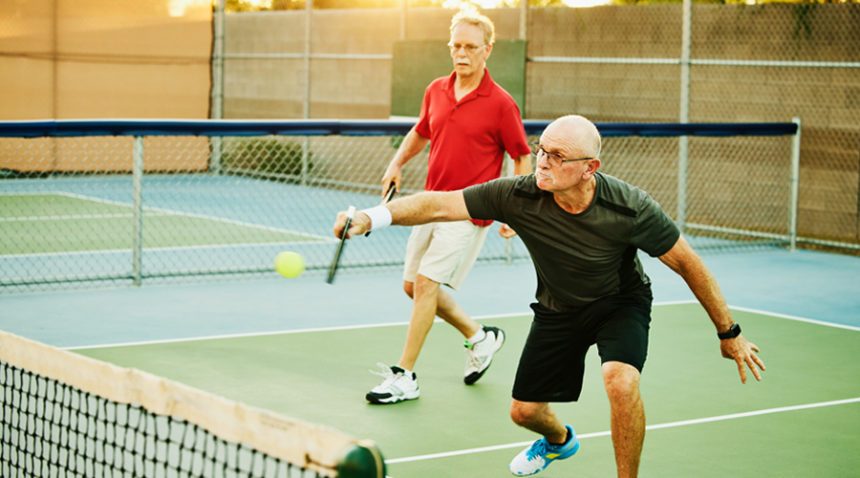Does tennis sound fun, but the mere idea of running and twisting on a tennis court makes your knees scream in their sockets? Consider pickleball, a racquet game with a silly name that is America’s fastest-growing sport—nearly 5 million people are playing.
Pickleball is popular in part because it’s low impact, but injuries are still possible. That’s why it’s important to warm up and strengthen your muscles.
“I was a tennis player, but I had given it up,” says Sabrina Anderson, a member services representative at the UNC Wellness Center in Raleigh. “I wanted to stay active, so I started playing pickleball a few years ago. It’s slower-paced, so it doesn’t seem like you get hurt as much. But you can still get hurt if you’re not playing the right way.”
Pickleball Basics
In pickleball, players whack a plastic ball with holes in it back and forth over a 36-inch-high net. It’s sort of a cross between tennis, badminton and pingpong, and it can be played inside or outdoors, singles or doubles.
Many players are older adults who want to stay active, but younger people play pickleball, too; the average age of players is 38. There’s a U.S. Collegiate Pickleball Association, junior leagues, elementary school teams and wheelchair pickleball.
Starting in Pickleball
Anderson recommends taking lessons when you first start playing pickleball. An internet search will show plenty of places to learn—county or city parks and recreation departments, YMCAs, clubs, schools and senior centers. Anderson and her husband attend clinics offered by the city of Raleigh.
“Some people think they know how to play pickleball because they played tennis,” she says. “But the racquet is different, the ball is different, everything is different. It’s important to learn the basics so you can have fun and reduce your chances of getting hurt.”
Conditioning for Pickleball
While pickleball may be less demanding on the body than tennis, proper training and warmups are still critical, says UNC Wellness Center personal trainer Jake Orndorff.
“If you just walk on the court and start playing, there’s a good chance you’ll pull a hamstring, get muscle spasms and muscle aches,” he says. “Everybody should warm up before they start playing. Put your joints through a full range of motion and see if your body is good to go.”
He also recommends strengthening your muscles to improve your stamina: “Do lunges, squats, deadlifts, balance on one leg, stretch,” he says. “Press and pull with your upper body. If you feel any joint restrictions, work on your mobility.”
Ask a doctor, physical therapist or fitness trainer how to increase mobility and strengthen your muscles, Orndorff says.
Prevent Pickleball Injuries
Pickleball players can suffer some of the same injuries that tennis players do: sprained ankles, knee and back injuries, and broken wrists. Repetitive motion can cause chronic injuries including plantar fasciitis, lower back strains and elbow injuries.
The USA Pickleball Association offers tips to help prevent injuries during pickleball, including:
- Avoid backpedaling on the pickleball court.
- Stretch and warm up before you play.
- Wear proper court shoes and eye protection.
- Get enough rest.
- Wear sunscreen and a hat.
- Stay hydrated.
Before you start any exercise program, talk to your doctor, or find one near you.

